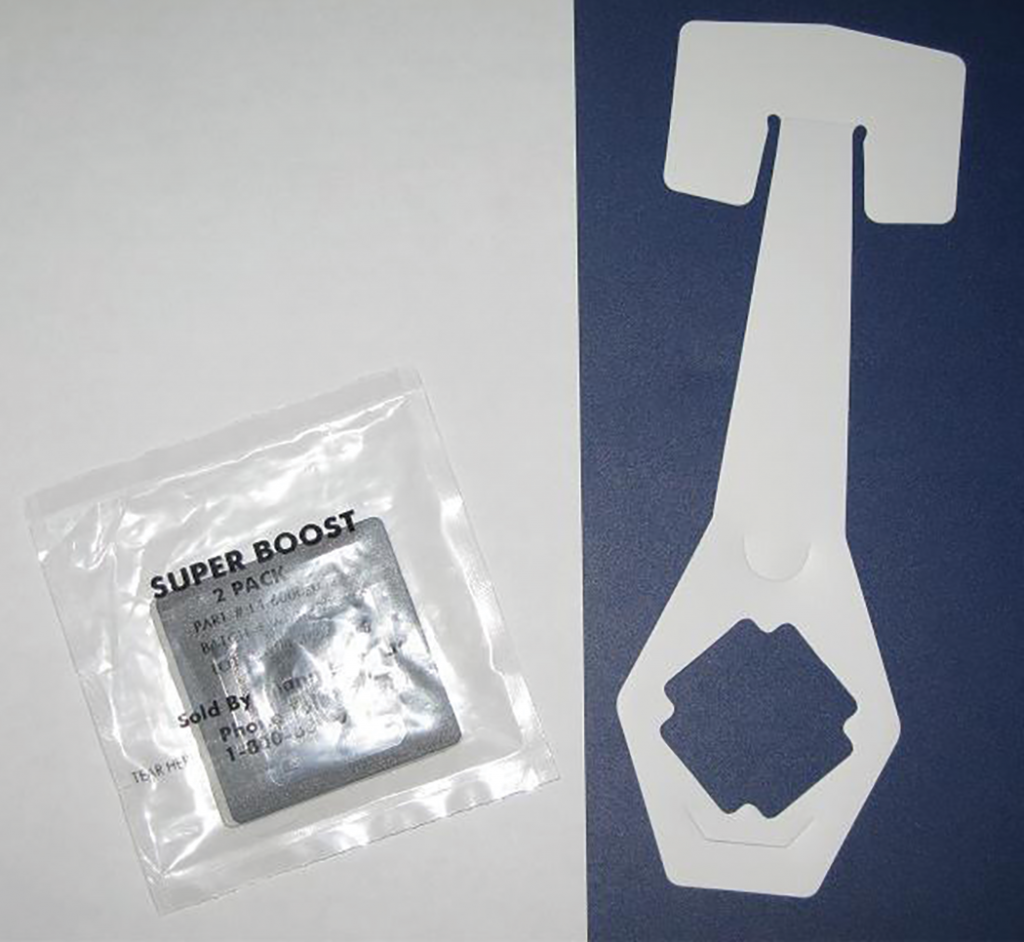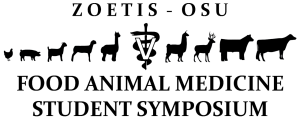by Clarence Collison
Synthetic Brood Pheromone.
Honey bee brood pheromone is a blend of 10 simple fatty-acid esters that are extractable from the larval cuticle and are described as important compounds in the chemical communication between brood and workers. Some components are more active than others, but all ten individual compounds show some releaser activity (Le Conte et al. 2001). In the three brood types, the esters are secreted in different proportions according to the sex and caste of the larvae (Trouiller et al. 1991; Trouiller et al. 1993). Nurse bees can discriminate between old and young larvae because of the different pheromone blends. In addition to regulating brood rearing, the 10 fatty acid esters have been shown to stimulate worker pollen foraging, protein biosynthesis in the brood food-producing glands of nurse bees and queen oviposition.
SuperBoost® is a proprietary commercial product comprising the non-volatile 10-component honey bee brood pheromone, stabilized with an antioxidant, and delivered to a colony in a controlled release device. The pheromone (180 mg) is contained in a plastic pouch with a pheromone-permeable polyethylene release membrane and a pheromone-impermeable Mylar backing. The pouch is mounted in a solid plastic holder.
Adding synthetic brood pheromone to colonies has been shown to affect worker bee physiology by inhibiting worker ovary activation (Arnold et al. 1994; Mohammedi et al. 1998) and altering protein levels in brood-food producing glands (Peters et al. 2010). Brood pheromone affects worker behavior by increasing the activity of existing foragers, particularly pollen foragers (Pankiw et al. 1998; Pankiw and Page 2001; Pankiw 2007; Pankiw et al. 2008; Sagili and Pankiw 2009; Sagili et al. 2011). It increases brood rearing (Pankiw et al. 2004; Sagili et al. 2011) and stimulates the capping of cells containing mature larvae (Le Conte et al. 1990).
SuperBoost® is a proprietary commercial
product comprising the non-volatile
10-component honey bee brood pheromone.
Morei et al. (2011) conducted a 12-replicate, 70–day, single-blind experiment that was set up on 4 February 2009 at Abbotsford, BC, Canada, to test the utility of SuperBoost® for enhancing spring build-up of overwintered honey bee colonies. Colonies were randomly assigned as untreated controls or to be treated with fresh-loaded SuperBoost® devices. Devices were replaced once (after 37 days). Supplementary pollen substitute (Bee Pro®) was fed to bees ad libitum. Measurements of BeePro consumption were made on nine occasions. On days 16 and 70 the area of brood comb and numbers of adult bees were determined. When colonies were divided (split), the numbers of daughter colonies were recorded. Two colonies treated with SuperBoost died during the experiment, as did one control colony. SuperBoost devices released 0.37 and 0.54 mg per day of pheromone over the two exposure periods, as determined gravimetrically. By Day 70, treated colonies had consumed 50% more BeePro® than control colonies. Treated colonies had significantly more brood comb area (2.4 times) and adults (2.0 times) than control colonies. By day 96, six of the 10 surviving SuperBoost® treated colonies had produced nine daughter colonies, a significantly higher proportion than the two of 11 control colonies, which produced four splits. They concluded that SuperBoost® has substantial potential for enhancing the spring build-up of overwintered colonies.
The 10-component honey bee brood pheromone has considerable potential for use in honey bee management since its stability was improved by adding a food-grade antioxidant and a long-term slow release device was developed and tested. After discarding 19 potential materials and devices for releasing synthetic brood pheromone, Pankiw et al. (2011) found a suitable method using a small plastic pouch with a pheromone impermeable Mylar backing and a pheromone-permeable low-density polyethylene release surface. Heat-sealed pouches, 3.8 x 3.5 cm, containing 200 µl of synthetic brood pheromone released 0.30-0.35 mg of pheromone per day in the laboratory; pheromone had to be artificially removed from the polyethylene membrane daily (equivalent to being removed by contact with worker bees) in order for the flow to be maintained. Compared to untreated control colonies, colonies exposed from late Summer to early Fall in southeast Texas to pheromone-laden pouches mounted in 35 mm plastic slide frames demonstrated more frequent foraging trips by worker bees, heavier pollen loads, and a higher ratio of pollen to non-pollen foragers from days eight to 36 of continuous exposure. Pheromone-treated colonies also had significant growth in brood comb area and adult population level at a time when untreated control colonies were naturally declining in size.
Honey bee nutrition is vital for colony growth and maintenance of a robust immune system. Brood rearing in colonies is highly dependent on protein availability. Beekeepers in general provide protein supplement to colonies during periods of pollen dearth. Honey bee brood pheromone has been shown to increase protein supplement consumption and growth of honey bee colonies in a subtropical winter climate. Sagili and Breece (2012) tested the hypothesis that synthetic brood pheromone (SuperBoost®) has the potential to increase protein supplement consumption during Fall in a temperate climate and thus increase colony growth. The experiments were conducted in two locations in Oregon during September and October 2009. In both the experiments, colonies receiving brood pheromone treatment consumed significantly higher protein supplement and had greater brood area and adult bees than controls. Results from this study suggest that synthetic brood pheromone may be used to stimulate honey bee colony growth by stimulating protein supplement consumption during Fall in a northern climate, when a majority of the beekeepers feed protein supplement to their colonies.
Honey bee nutrition is vital for colony growth and maintenance of a robust immune system.
Brood ester pheromone (BEP) is a pheromone emitted by developing larvae in a honey bee colony. It has been shown to have multiple potential commercially beneficial effects on worker physiology and behavior, but like other bee pheromones, its effects are likely dependent on the conditions. To better understand the utility of BEP treatment, Peso and Barron (2014) examined the effects of BEP treatment in an apicultural setting (using a SuperBoost® BEP treatment) in two contexts: in newly established colonies from bee packages in the Summer and on large, established colonies in the Autumn. They found that in small, newly established colonies, BEP treatment had no effect on colony growth (measured as brood area). Further, BEP treatment decreased overall foraging activity and the proportion of pollen foragers. In established colonies, BEP had no effect on brood area or foraging behavior later in the season. Their data show that BEP treatments can change the behavior of bees, but these can only translate into improved colony conditions if other factors are not limiting colony performance.
Lait et al. (2012) evaluated a year-long treatment regime testing synthetic, honey bee brood pheromone (SuperBoost®; Contech Enterprises Inc., Delta, BC, Canada) on the productivity and vigor of package bee colonies in the lower Fraser Valley of British Columbia, Canada. Fifty-eight newly established 1.3-kg (3-lb) colonies treated three times with SuperBoost® at five-week intervals starting 30 April 2009 were compared with 52 untreated control colonies. Treated colonies produced 84.3% more honey than untreated control colonies. By 8 September 2009 SuperBoost-treated colonies had 35.4% more adults than untreated colonies. By 28 September, net survival of treated and control colonies was 72.4 and 67.3%, respectively. On 5 October, treated and control colonies were divided into two additional groups, making up four cohorts: SuperBoost-treated colonies were treated again during Fall and Spring build-up feeding with pollen substitute diet (BeePro®, Mann Lake Ltd., Hackensack, MN; TIT); controls that remained untreated throughout the year (CCC); colonies treated with SuperBoost in Spring-Summer 2009 but not treated thereafter (TCC); and original control colonies treated with SuperBoost during the Fall and Spring-buildup feeding periods (CTT). There was no difference among cohorts in consumption of BeePro during Fall feeding, but TTT colonies (including daughter colonies split off from parent colonies) consumed 50.8% more diet than CCC colonies during Spring build-up feeding. By 21 April, the normalized percentages of the original number of colonies remaining (dead colonies partially offset by splits) were as follows: CCC, 31.4%; CTT 43.8%; TCC, 53.59%; and TTT, 80.0%. The net benefit of placing 100 newly established package bee colonies on a year-long six-treatment regime with SuperBoost® would be U.S. $62.02 per colony. They concluded that treatment with SuperBoost® enhanced the productivity and survival of package bee colonies and hypothesized that similar results could be achieved with established colonies.
Brood pheromone has been shown to modulate the foraging behavior of honey bee colonies (Pankiw 2004), inducing foragers to collect more pollen (Le Conte et al. 2001). Pankiw (2007) determined pollen forager turnaround time in observation hives supplemented with brood pheromone versus a blank control treatment. Treatment with brood pheromone significantly decreased pollen forager turnaround time in the hive between foraging bouts by approximately 72%. Concurrently, brood pheromone increased the ratio of pollen to non-pollen foragers entering colonies. Brood pheromone has been shown to release most of the mechanisms known to increase pollen intake by colonies acting as an important regulator of colony foraging decisions and growth.
Pankiw (2004) evaluated colonies being used for pollinating cucumber, Cucumis sativus L. and zucchini squash Cucurbita pepo L. in Texas in late Autumn. Six colonies were randomly selected to receive 2,000 larval equivalents of brood pheromone and six received a blank control. The ratio of pollen to non-pollen foragers entering colonies was significantly greater in pheromone-treated colonies one hour after treatment. Pheromone-treated foragers returned with pollen load weights that were significantly heavier than controls. Pollen returned by pheromone-treated foragers was 43% more likely to originate from the target crop. Number of pollen grains washed from the bodies of non-pollen foragers from pheromone-treated colonies was significantly greater than controls and the pollen was 54% more likely to originate from the target crop. Increasing the foraging stimulus environment with brood pheromone increased colony-level foraging and individual forager efforts. Brood pheromone is a promising technology for increasing the pollination activity and efficiency of commercial honey bee colonies.
In separate experiments conducted in central Oregon, Sagili et al. (2015) tested the hypotheses that treatment of colonies with brood pheromone would stimulate increased bee foraging in hybrid carrot (Daucus carota) seed fields, and that in turn would result in increased seed yield. For both experiments, in each replicate, all colonies placed in one field were treated with brood pheromone, and those in a control field were not treated with brood pheromone. A total of 123,720 bee visits to flowers was recorded. For both sexes of flower, there were significantly more bee visits in fields in which colonies were treated with brood pheromone than in control fields. There was also a significant preference for male flowers over female flowers by bees in the fields where colonies received brood pheromone when compared with control fields. Mean yields in fields pollinated by colonies treated with brood pheromone and those that were not treated with brood pheromone were 325.2 and 280.8 kg/hectare, respectively. Mean percentage yield was significantly higher in fields where colonies received brood pheromone when compared with control fields that had colonies without brood pheromone. Their results suggest that brood pheromone has the potential to increase honey bee foraging and seed yield in hybrid carrot seed crops.
REFERENCES
Arnold, G., Y. Le Conte, J. Trouiller, H. Hervet, B. Chappe and C. Masson 1994. Inhibition of worker honeybee ovaries development by a mixture of fatty acid esters from larvae. C.R. Acad. Sci. III. 317: 511-515.
Lait, C.G., J.H. Borden, E. Kovacs, O.E. Moeri, M. Campbell and C.M. Machial 2012. Treatment with synthetic brood pheromone (SuperBoost) enhances honey production and improves overwintering survival of package honey bee (Hymenoptera: Apidae) colonies. J. Econ. Entomol. 105: 304-312.
Le Conte, Y., G. Arnold, J. Trouiller, C. Masson and B. Chappe 1990. Identification of a brood pheromone in honeybees. Naturwissenschaften 77: 334-336.
Le Conte, Y., A. Mohammedi and G. Robinson 2001. Primer effects of a brood pheromone on honeybee behavioural development. Proc. R. Soc. B. 268: 163-168.
Moeri, O.E., C.G. Lait, E. Kovacs, J.H. Borden and M. Campbell 2011. SuperBoost® synthetic brood pheromone enhances spring build-up of overwintered honey bee colonies. J. Apic. Res. 50: 265-271.
Mohammedi, A., A. Paris, D. Crauser and Y. LeConte 1998. Effect of aliphatic esters on ovary development of queenless bees (Apis mellifera L.). Naturwissenschaften 85: 455-458.
Pankiw, T. 2004. Brood pheromone regulates foraging activity of honey bees (Hymenoptera: Apidae). J. Econ. Entomol. 97(3): 748-751.
Pankiw, T. 2007. Brood pheromone modulation of pollen forager turnaround time in the honey bee (Apis mellifera L.). J. Insect Behav. 20: 173-180.
Pankiw, T. and R.E. Page Jr. 2001. Brood pheromone modulates honeybee (Apis mellifera L.) sucrose response thresholds. Behav. Ecol. Sociobiol. 49: 206-213.
Pankiw, T., R.E. Page Jr. and M.K. Fondrk 1998. Brood pheromone stimulates pollen foraging in honey bees (Apis mellifera). Behav. Ecol. Sociobiol. 44: 193-198.
Pankiw, T., R. Roman, R. R.Sagili and K. Zhu-Salzman 2004. Pheromone-modulated behavioral suites influence colony growth in the honey bee (Apis mellifera). Naturwissenschaften 91: 575-578.
Pankiw, T., R. Sagili and B. Metz 2008. Brood pheromone effects on colony protein supplement consumption and growth in the honey bee (Hymenoptera: Apidae) in a subtropical winter climate. J. Econ. Entomol. 101: 1749-1755.
Pankiw, T., A.L. Birmingham, J.P. Lafontaine, N. Avelino and J.H. Borden 2011. Stabilized synthetic brood pheromone delivered in a slow-release device enhances foraging and population size of honey bee, Apis mellifera, colonies. J. Apic. Res. 50: 257-264.
Peso, M. and A.B. Barron 2014. The effects of brood ester pheromone on foraging behaviour and colony growth in apicultural settings. Apidologie 45: 529-536.
Peters, L., K. Zhu-Salzman and T. Pankiw 2010. Effect of primer pheromones and pollen diet on the food producing glands of worker honey bees (Apis mellifera L.) J. Insect Physiol. 56: 132-137.
Sagili. R.R. and C.R. Breece 2012. Effects of brood pheromone (SuperBoost) on consumption of protein supplement and growth of honey bee (Hymenoptera: Apidae) colonies during fall in a northern temperate climate. J. Econ. Ento. 105: 1134-1138.
Sagili, R. and T. Pankiw 2009. Effects of brood pheromone modulated brood rearing behaviors on honey bee (Apis mellifera L.) colony growth. J. Insect Behav. 22: 339-349.
Sagili, R., T. Pankiw and B. Metz 2011. Division of labor associated with brood rearing in the honey bee: how does it translate to colony fitness? PLoS One 6(2): 1-7.
Sagili, R.R., C.R. Breece, R. Simmons and J.H. Borden 2015. Potential of honeybee brood pheromone to enhance foraging and yield in hybrid carrot seed. HortTechnology 25: 98-104.
Trouiller, J., G. Arnold, Y. Le Conte, C. Masson and B. Chappe 1991. Temporal pheromonal and kairomonal secretion in the brood of honeybees. Naturwissenschaften 78: 368-370.
Trouiller, J., G. Arnold, Y. Le Conte, C. Masson and B. Chappe. 1993. The production of kairomones of Varroa jacobsoni and brood pheromones by honey bee larvae. In: Asian Apiculture, (Eds) L.J. Connor, T. Rinderer, H.A. Sylvester & S. Wongsiri, Wicwas Press, Cheshire, CT, pgs. 447-453.
Clarence Collison is an Emeritus Professor of Entomology and Department Head Emeritus of Entomology and Plant Pathology at Mississippi State University, Mississippi State, MS.










